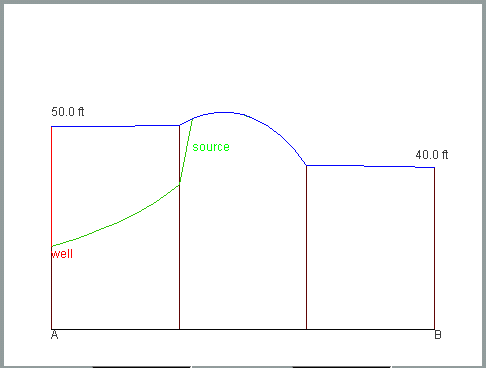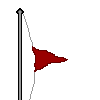EPA On-line Tools for Site Assessment Calculation
| Module Home Objectives Table of Contents Previous < Next > |
| 18 of 67 |
The recharge model is based on the assumption that the aquifer can be conceptualized as a one-dimensional flow system. It is easy to generate parameter sets that result in mounding in the middle of the domain--reducing the hydraulic conductivity and increasing the recharge rate for the center section. The result is that there is flow toward both ends of the domain. This occurs even though one head is higher than the other. It is the volume of water entering the aquifer from all sources that determines the shape of the water table. In this case there can be enough water entering through recharge swamp out the gradient that would be established by the constant head boundaries.
By changing the hydraulic conductivity to 0.1 ft/d and increasing the recharge rate to 20 in/yr, a mound is generated in the example problem solution. Flow is toward the left hand boundary (50 ft head) when the source location is chosen to be 275 ft.

Home | Glossary | Notation | Links | References | Calculators |

